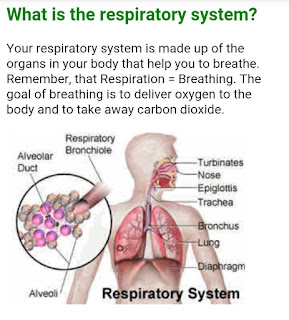Bestarewa
May 31, 2017
0 Comments
FALALAR YIN SALLAR ASHAM
Ankarbo daga sayyadi Aliyu dan Abi Dalib (RTA) yace
Na tambayi manzon Allah (SAW) acikin Falalar yin sallar Asham Acikin wata Ramadan sai Manzon Allah (SAW) yace
Wanda yayi Asham adare na farko Awatan Ramadan mumini yana fita daga cikin laifinsa kamar yadda mahaifiyarsa ta haifeshi,
Wanda yayi Asham Adarena 2 Allah zai gafartawa iyayansa,
Wanda yayi Asham Adare na 3 Wani Mala'ika zaikira sunansa a karkashin Al'arshi yace Anunka aiyukan Alkhairi kuma agafarta laifukansa,
Wanda yayi Asham Adare na 4 za'a bashi ladan wanda yakaranta Attaura, Injila, zabura, da Alqur'ani,
Wanda yayi Asham Adare na 5 Za'a ladan yayi sallah a makka da Madina,
Wanda yayi Asham Adare na 6 za'a bashi ladan mala'ikun da suke kewaye da Baitul ma'amuri kuma dukkan dutse da marmara zasu nemi agafarta masa laifukansa,
Wanda yayi Asham Adare na 7 kamar yariski Annabi musa ne yataimakeshi akashe Fir'auna da Hamana,
Wanda yayi adare na 8 Allah zaibashi ladan daya bawa Annabi Ibrahim,
Wanda yayi adare na 9 Kamar ya bautawa Allah ne irin wadda Annabi Muhd (SAW)
Yayiwa Allah,
Wanda yayi adare na 10 Allah zai'azurtashi Da Alkhairan duniya da lahira,
Wanda yayi adare na 11 zai fita daga duniya kamar yadda aka haifeshi,
Wanda yayi adare na 12 zaizo ranar Alkiya yana Amintacce
Wanda yayi adare na 13 Allah zaigina masa birni Agidan Aljanna,
Wanda yayi adare na 14 Mala'iku zasuzo suyi masa shaidar yayi sallar Asham baza aimasa hisabiba,
Wanda yayi adare na 15 Mala'iku zasuyi masa salati da madauka Al'arshi da kursiyu,
Wanda yayi adare na 16 Allah zai rubuta sunansa daga masu kubuta daga wuta,
Wanda yayi adare na 17 za'a bashi lada kamarna dukkan Annabawa,
Wanda yayi adare na 18 wani mala'ika zai kiransa yace yakai bawan Allah
Allah ya yarda dakai da mahaifanka,
Wanda yayi adare na 19 Allah zaidaga matsayinsa a Aljanna Firdausi,
Wanda yayi adare na 20 Allah zaibashi ladan shahidai da salihan bayi
Wanda yayi adare na 21 Allah zaigina masa daki a Aljanna da haske,
Wanda yayi adare na 22 zaizo ranar Alkiyama yana Amintacce daga bakin ciki
Wanda yayi adare na 23 Allah zaigina masa gida a Aljanna,
Wanda yayi adare na 24 za'a amsa Addu'o insa guda 24,
Wanda yayi adare na 25 za'a dauke masa azabar kabari,
Wanda yayi adare na 26 za'a taramasa ladan shekara Arba'in,
Wanda yayi adare na 27 zaifice ranar Alkiyama Akan siradi kamar walkiya,
Wanda yayi adare na
28 za'a daga martabarsa sau dubu,
Wanda yayi adare na 29 Allah zaibashi ladan Aikin hajji dubu karbabbu,
Wanda yayi adare na 30 Allah zaice..............
WASSALAM
BY ABBA YAHAYA ABDULLAHI
Ankarbo daga sayyadi Aliyu dan Abi Dalib (RTA) yace
Na tambayi manzon Allah (SAW) acikin Falalar yin sallar Asham Acikin wata Ramadan sai Manzon Allah (SAW) yace
Wanda yayi Asham adare na farko Awatan Ramadan mumini yana fita daga cikin laifinsa kamar yadda mahaifiyarsa ta haifeshi,
Wanda yayi Asham Adarena 2 Allah zai gafartawa iyayansa,
Wanda yayi Asham Adare na 3 Wani Mala'ika zaikira sunansa a karkashin Al'arshi yace Anunka aiyukan Alkhairi kuma agafarta laifukansa,
Wanda yayi Asham Adare na 4 za'a bashi ladan wanda yakaranta Attaura, Injila, zabura, da Alqur'ani,
Wanda yayi Asham Adare na 5 Za'a ladan yayi sallah a makka da Madina,
Wanda yayi Asham Adare na 6 za'a bashi ladan mala'ikun da suke kewaye da Baitul ma'amuri kuma dukkan dutse da marmara zasu nemi agafarta masa laifukansa,
Wanda yayi Asham Adare na 7 kamar yariski Annabi musa ne yataimakeshi akashe Fir'auna da Hamana,
Wanda yayi adare na 8 Allah zaibashi ladan daya bawa Annabi Ibrahim,
Wanda yayi adare na 9 Kamar ya bautawa Allah ne irin wadda Annabi Muhd (SAW)
Yayiwa Allah,
Wanda yayi adare na 10 Allah zai'azurtashi Da Alkhairan duniya da lahira,
Wanda yayi adare na 11 zai fita daga duniya kamar yadda aka haifeshi,
Wanda yayi adare na 12 zaizo ranar Alkiya yana Amintacce
Wanda yayi adare na 13 Allah zaigina masa birni Agidan Aljanna,
Wanda yayi adare na 14 Mala'iku zasuzo suyi masa shaidar yayi sallar Asham baza aimasa hisabiba,
Wanda yayi adare na 15 Mala'iku zasuyi masa salati da madauka Al'arshi da kursiyu,
Wanda yayi adare na 16 Allah zai rubuta sunansa daga masu kubuta daga wuta,
Wanda yayi adare na 17 za'a bashi lada kamarna dukkan Annabawa,
Wanda yayi adare na 18 wani mala'ika zai kiransa yace yakai bawan Allah
Allah ya yarda dakai da mahaifanka,
Wanda yayi adare na 19 Allah zaidaga matsayinsa a Aljanna Firdausi,
Wanda yayi adare na 20 Allah zaibashi ladan shahidai da salihan bayi
Wanda yayi adare na 21 Allah zaigina masa daki a Aljanna da haske,
Wanda yayi adare na 22 zaizo ranar Alkiyama yana Amintacce daga bakin ciki
Wanda yayi adare na 23 Allah zaigina masa gida a Aljanna,
Wanda yayi adare na 24 za'a amsa Addu'o insa guda 24,
Wanda yayi adare na 25 za'a dauke masa azabar kabari,
Wanda yayi adare na 26 za'a taramasa ladan shekara Arba'in,
Wanda yayi adare na 27 zaifice ranar Alkiyama Akan siradi kamar walkiya,
Wanda yayi adare na
28 za'a daga martabarsa sau dubu,
Wanda yayi adare na 29 Allah zaibashi ladan Aikin hajji dubu karbabbu,
Wanda yayi adare na 30 Allah zaice..............
WASSALAM
BY ABBA YAHAYA ABDULLAHI














































![[Labari da dumi duminsa ] komai yasa haka a senator : Kwankwaso Tare Da Wasu Yan Majalisu Sun Koma Jam’iyyar PDP](https://blogger.googleusercontent.com/img/b/R29vZ2xl/AVvXsEi_O5mFpZaWrGMny_NYfDn42AL7Pt5qEfys-BrbH3pBma5RA5BLQKRBcOQQKyszDLu8HOs9Z2fog1BvxCWylBWchL76SEyxGd-3VUQGiFupYbV8kgYNL9lNUCQk3yC87xXMgYim7HKhYEI/s72-c/Kwankwaso-begs-court-to-stop-EFCC.jpg)






![[Labari da dumi duminsa ] komai yasa haka a senator : Kwankwaso Tare Da Wasu Yan Majalisu Sun Koma Jam’iyyar PDP](https://blogger.googleusercontent.com/img/b/R29vZ2xl/AVvXsEi_O5mFpZaWrGMny_NYfDn42AL7Pt5qEfys-BrbH3pBma5RA5BLQKRBcOQQKyszDLu8HOs9Z2fog1BvxCWylBWchL76SEyxGd-3VUQGiFupYbV8kgYNL9lNUCQk3yC87xXMgYim7HKhYEI/w72-h72-p-k-no-nu/Kwankwaso-begs-court-to-stop-EFCC.jpg)
